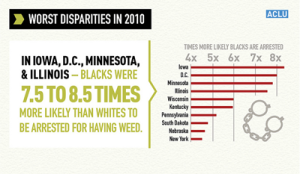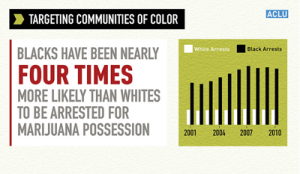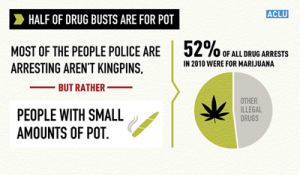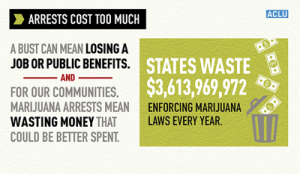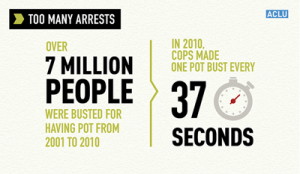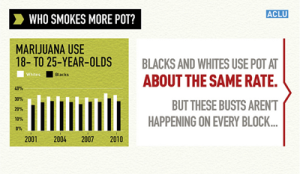Measure 91 gives a welcome nod to rationality
 Looking back, many of our Feature articles seem to lean a little toward the depressing side. We’ve written about police abuse, endless war, corporatocracy, political malfeasance, corruption, and so much more, and these are all obviously important issues. We could find a lot more to grumble over in the recent mid-term election results, but instead, we’re going to choose to be happy for a change. Oregon just gave that chance to all of us with the passage of Measure 91, legalizing marijuana for adult recreational use. It’s the long overdue end of a massively destructive policy, and it gives a glimmer of hope that government can (occasionally) give a nod to rationality…
Looking back, many of our Feature articles seem to lean a little toward the depressing side. We’ve written about police abuse, endless war, corporatocracy, political malfeasance, corruption, and so much more, and these are all obviously important issues. We could find a lot more to grumble over in the recent mid-term election results, but instead, we’re going to choose to be happy for a change. Oregon just gave that chance to all of us with the passage of Measure 91, legalizing marijuana for adult recreational use. It’s the long overdue end of a massively destructive policy, and it gives a glimmer of hope that government can (occasionally) give a nod to rationality…
How did marijuana become illegal?
The history of marijuana use and prohibition is a symphony of power, ignorance, and corruption, and we aren’t going to attempt to give you a detailed recap here. (If you are interested, though, there are good histories and timelines here, here, here, here, and here) Known uses go back before 7000 BC, and marijuana (or hemp) has been used for food, incense, medicine, fabric, rope, paper, cosmetics, fuel, and more. The first laws concerning marijuana didn’t prohibit it; in fact they required farmers to grow hemp! Marijuana was effectively made illegal in 1937 with the Marijuana Tax Act, and when the Tax Act was found unconstitutional in 1969, Congress rolled it into 1970’s Controlled Substances Act. On a Federal level pot remains an illegal Schedule 1 drug (classed with heroin and LSD), but on a state level laws range from states like Oklahoma where you can be get a life sentence for selling a $10 bag to the 23 states (and DC) that have legalized medical marijuana and the four states that have now legalized it for recreational use. (Pot has been decriminalized in Oregon since 1973, the first state to do so.)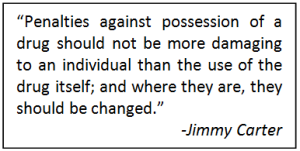
While no substance is completely safe, marijuana is one of the safest around. There is no lethal overdose, it is not physically addictive, and it even has mildly beneficial qualities. Smoking (or eating) marijuana makes you feel relaxed and maybe a little giggly. When pot was first made illegal it wasn’t because of people actually being hurt or going on drug-fueled killing sprees, it was because of an organized propaganda campaign. Support for criminalization came from people who were unfamiliar with and scared of marijuana’s effects, from people who were overtly racist against the groups using it, and from industrial interests who would prosper if hemp were made illegal. As an example, one notable booster was the Dupont Chemical Company, whose recent patent for nylon directly competed with hemp products. In the south and west, marijuana was linked with an influx of Mexican immigrants. In the north and east it was linked with jazz music and black people. This quote from Harry J. Anslinger, one of the driving forces behind marijuana prohibition, sums up the slurs against all the “pot fiends” at the time…
“There are 100,000 total marijuana smokers in the US, and most are Negroes, Hispanics, Filipinos, and entertainers. Their Satanic music, jazz, and swing, result from marijuana use. This marijuana causes white women to seek sexual relations with Negroes, entertainers, and any others.”
What has been the effect of criminalization?
Regardless of why marijuana was initially made illegal, we’ve lived with the effects ever since. While prohibition laws did not reduce use, they did increase the costs to our society. With pot laws falling around the country, it’s easy to forget that there are still people serving life sentences for possession of marijuana. We could detail the corrupt cops, the clogged courts, the destroyed lives, but the the ACLU has done an excellent job for us. In their project on Marijuana Law Reform, they have an excellent series of slides called “Marijuana Arrests By The Numbers” detailing just how destructive these laws have become. We highly encourage you to visit their site, but graphics from their excellent slideshow on the subject are below. For more detail, they also have information on marijuana reform around the country.
There are several other sources we’d like to direct you to for in-depth information about marijuana prohibition, its history, its effects, and its future. The first is NORML, The National Organization for the Reform of Marijuana Laws. Since their founding in 1970, NORML has been the premiere advocate for rational pot policies. The link below will take you to their report on the 60-year prohibition on pot.
As an advocacy group, NORML may well be a little biased. A more journalistic briefing, yet still fair and in-depth, comes from FRONTLINE and their episode “Busted- America’s War On Marijuana”.
There are several common misconceptions about marijuana, and the Drug Policy Alliance has put together a page addressing 10 of the most common ones. Questions include “Does marijuana use have long term cognitive effects?”, “Is marijuana a gateway drug?”, and “Does marijuana impair driving the way alcohol does?”

If there’s group with the straight dope on pot, it’s NORML. This link takes you to their report on 60 years of marijuana prohibition in the US…
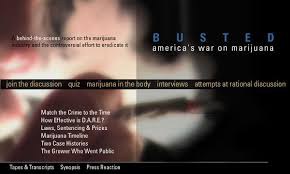
Our drug war has done a lot of things, but reducing drug use hasn’t been one of them. Frontline reports
What will be the effects of the new law in Oregon?
The new law has already had some effects as Portland prosecutors begin reviewing their marijuana possession cases. This Oregonian article goes into much greater detail. The Marijuana Policy Project has a point-by-point analysis of the Measure 91, but here are some of the high points…
- Removes penalties for adults 21 and older who possess, use, and grow a limited amount of marijuana.
- Possession is limited to 8 oz of pot and growing 4 pot plants total for the household. Other limits apply to public possession and gifting.
- The law creates four types of marijuana businesses- Producers, Processors, Wholesalers, and Retailers.
- Possession and home cultivation become legal on July 1, 2015. The OLCC will begin accepting applications for marijuana businesses on January 4, 2016.
- The OLCC will oversee the marijuana industry
- Marijuana flowers will be taxed at $35/oz,, leaves at $10/oz., and plants at $5 each, all adjusted for inflation.
- Taxes go to the Common School Fund, Mental Health Alcoholism and Drug Services, the State Police, and to cities and counties for local law enforcement.
What’s the future of marijuana legalization?
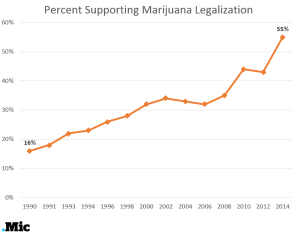 People around the country are grappling with balancing the harms from drugs with the harms from legalizing them. As the harms becomes clearer, the traditional balance is changing and it’s beginning to tilt toward legalization. According to Politics Cheat Sheet, we are “on the precipice of more states preparing for coming marijuana legalization initiatives, either derived from state legislators or from citizens themselves through the ballots”. They say Massachusetts, California, Missouri, Hawaii, Maine, Nevada, and Arizona may go green as soon as 2016.
People around the country are grappling with balancing the harms from drugs with the harms from legalizing them. As the harms becomes clearer, the traditional balance is changing and it’s beginning to tilt toward legalization. According to Politics Cheat Sheet, we are “on the precipice of more states preparing for coming marijuana legalization initiatives, either derived from state legislators or from citizens themselves through the ballots”. They say Massachusetts, California, Missouri, Hawaii, Maine, Nevada, and Arizona may go green as soon as 2016.
Of course, rational drug policy (or any rational policy) isn’t as simple as legalize or don’t. Frontline, as part of its marijuana coverage, featured a judge-led “attempt at a rational discussion of the so-called ‘war on drugs’”.
“A group of experts with varying political perspectives (law enforcement, treatment practitioners, elected officials, policy analysts, laboratory and clinical researchers) recently proposed ‘a third way’ to end the drug problem and avoid the current polarization. They hope to spark a rethinking of the country’s approach to drug policy. They are proposing not legalization and not a ‘war on drugs.’ Rather, 5 policies based on science and evaluated by their results rather than their symbolic value. Here is an outline of their fourteen principles for practical drug policies. The group was organized by the Drug Policy Project of the Federation of American Scientists.”

